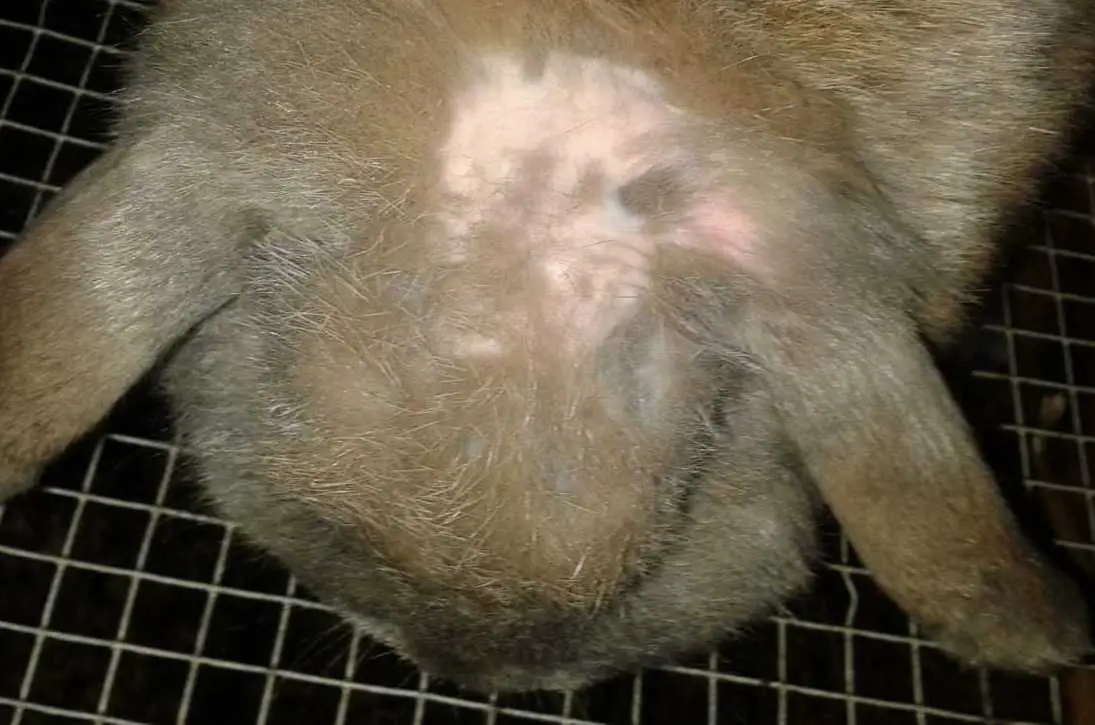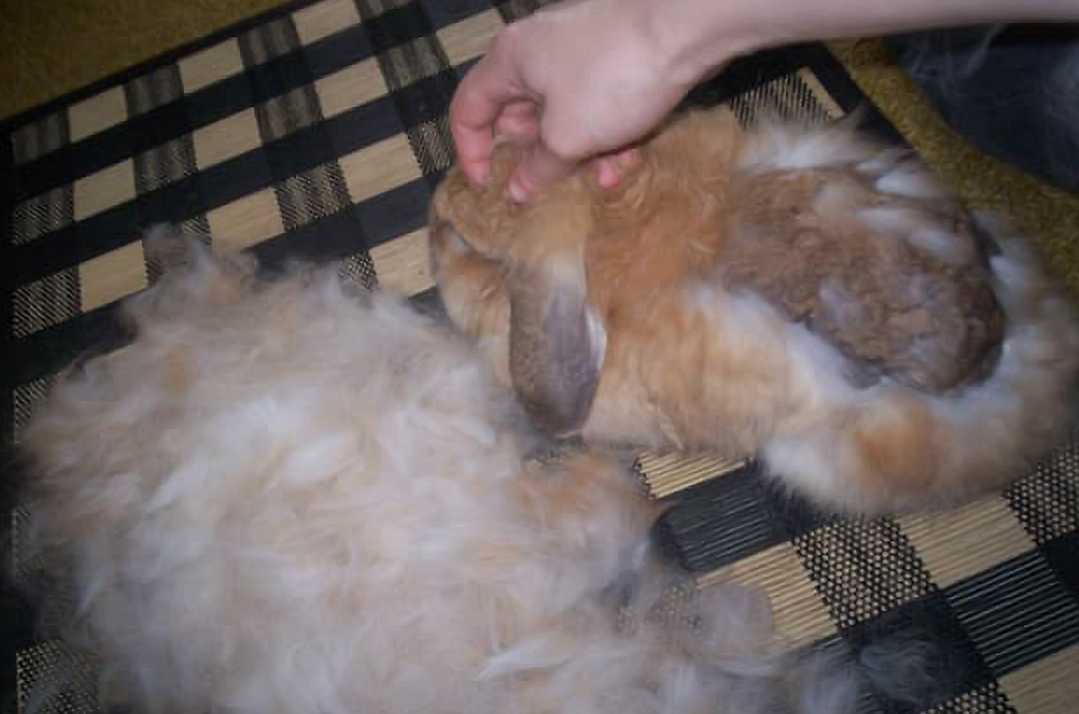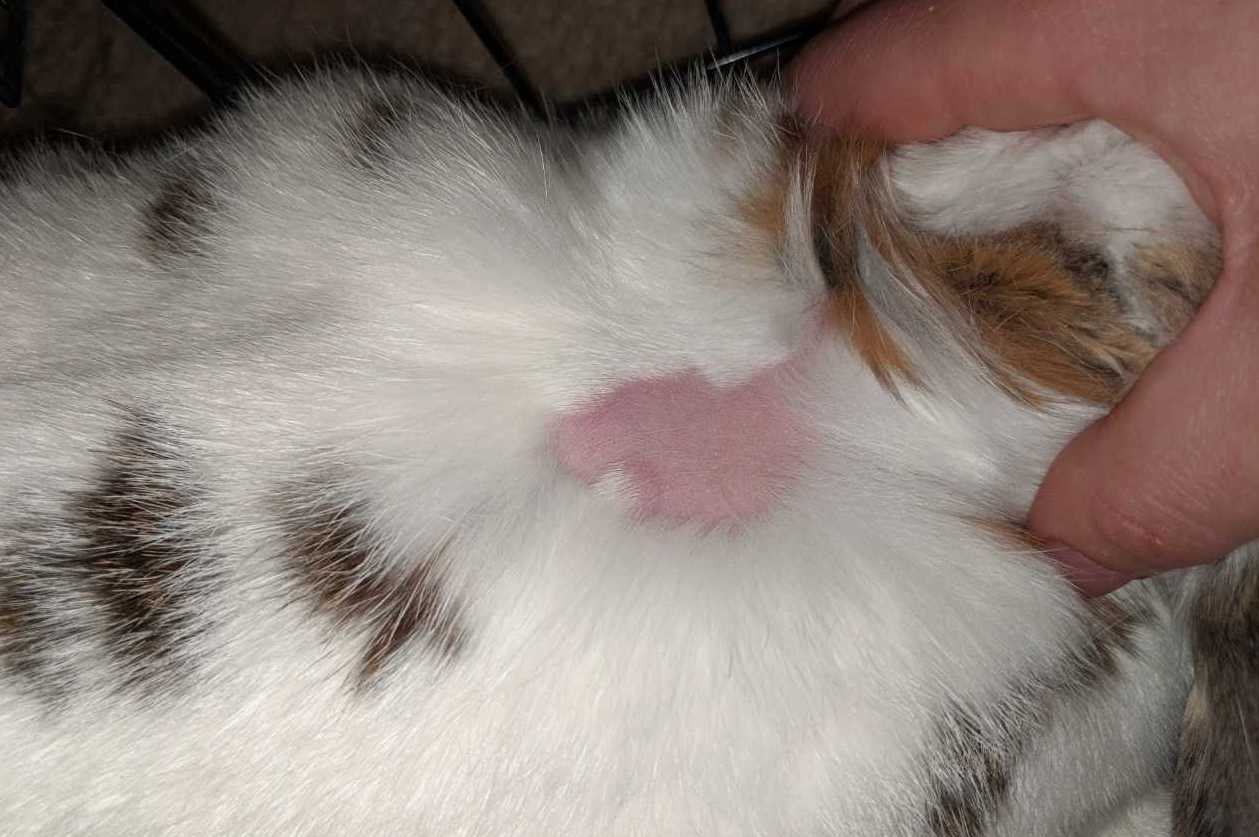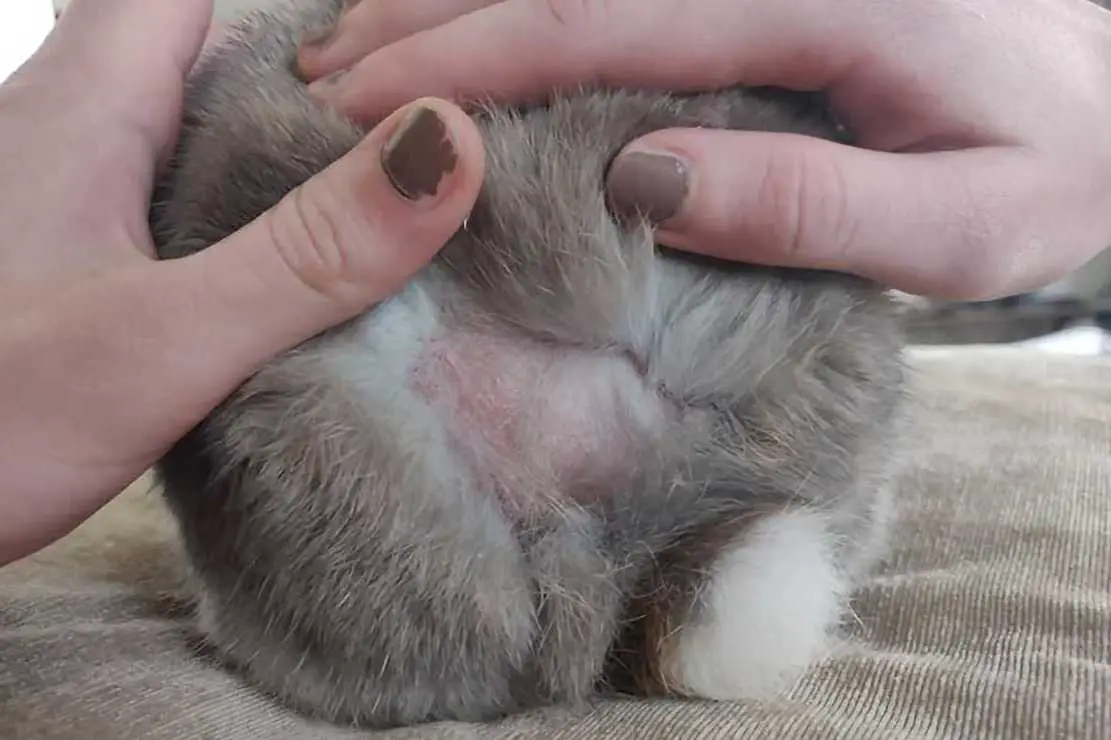Shedding is an essential part of any furry animal. In fact, it’s a beneficial process for them as shedding changes the old fur.
However, excessive shedding can have harmful and dangerous effects on your rabbit. in this article, we will tell you x reasons why your rabbit is shedding so much.
What is Shedding?
Shedding is the process that occurs when the rabbit’s fur becomes loose and falls out. Many factors trigger this phenomenon in rabbits, such as seasonal changes and molting season.
The process mostly happens around summertime as the temperature begins to get hotter. The thinning of fur is needed so that rabbits can have a better time with the heat.
The shedding of the coat is significant as rabbits are susceptible to changes in temperature and are prone to heat strokes.
Most of the time, the first fur shedding will occur at around four to five months for rabbits. It goes along with the sexual maturity and adulting process of bunnies. After the initial shed, the rabbit will undergo around one to two shedding per year, depending on the breed.
The amount of shedding can vary drastically from breed to breed. Rabbits with thicker fur, such as Angora, Rex, Belgian Hare, and Jersey Wholly, are prone to excessive shedding than breeds with shorter fur, such as Netherland Dwarf and American Fuzzy Lop.
With that said, too much shedding of the fur can signify other problems with the rabbit. Don’t worry! We will walk you along with the possible reasons and how to treat them.
Symptoms That Your Rabbit is Shedding Too Much
As stated above, shedding is s regular occurrence. However, excessive shedding is not and could be a sign of a deeper problem with the rabbit. Here are the symptoms you can look out for to differentiate regular molting from excessive shedding.
Excessive Fur Throughout the Area
Furry animals can sometimes leave a lot of hair on their trail. It’s a natural part of having a rabbit pet. With that said, excessive fur throughout the area can signify abnormal shedding. You might notice large clumps of hair around their food bowls and bedding.
Check if they leave trails of fur that are more than what you usually encounter. It can be easier to see as shedding from the coat mainly clumps together.
Patches on the Coat
Regular molting should not leave any empty patches on the rabbit’s skin. Natural shedding will happen across the whole body, from the head to the tail. The occurrence of patches on the rabbit’s coat can signify that your rabbit is undergoing excessive shedding.
Less Appetite
The excessive fur and decreased appetite can mean that the rabbit is ingesting too much hair. Rabbits regularly groom their coats like cats. Most of the time, they consume a small portion of strands without any problems.
On the other hand, excessive fur ingestion can cause many adverse effects on the rabbit, such as losing appetite and gastrointestinal stasis.
Why is My Rabbit Shedding So Much?
Now you know the common symptoms of excessive rabbit shedding, here are the possible reasons it happens.
1. Molting Season
Molting season is when rabbits shed their old skin cells to let new ones develop. It happens around the seasonal changes as the temperature rises. Most of the time, the dead skin cells also affect the cuticle of their fur.
Although we listed many symptoms of excessive shedding, sometimes the obvious and straightforward answer is the best one. While most rabbits molt once per year, other large and thick-furred such as angora or Flemish giants can lose two to three times.
2. Skin Problems
Skin problems due to parasites, infection, or improper grooming can cause too much shedding in rabbits. Since the skin that their coat is attached to is damaged, the fur is drastically impacted.
3. Fleas and Mites Infection
Bites from fleas and mites infection can damage the skin. The damaged skin cells can lead to hair loss and excessive shedding. Eliminating the fleas and mites should be done immediately as they can cause anemia and lower immune system.
4. Hormonal Changes
Hormonal changes, significantly when in heat, can trigger too much shedding. The symptoms subside most of the time, and the shedding will stop within a week or two.
5. Poor Diet
Rabbits need a good diet as they are relatively susceptible to many diseases and infections. When the rabbit does not get proper nutrition, it may lead to a weaker and more vulnerable body.
A poor diet can cause excessive shedding since the cells are not producing enough keratin to grow fur. You may also notice weaker teeth, bones, and nails.
6. Stress
Hair and fur loss are common symptoms of heightened stress. It’s observable in both humans and rabbits. When the rabbit is in an unsafe and chaotic environment, it might cause them stress and excessive hair loss.
What are the Effects of Too Much Shedding on Rabbits?
There are many adverse effects of too much shedding with rabbits, such as:
Wool Block
The wool block is a condition where the digestive tracks of the rabbit are clogged with excessive fur. Rabbits groom their fur regularly like cats, so the increase in shedding will also result in the ingestion of the strands.
Unfortunately, rabbits do not have the mechanism of cats that lets them throw the clumps of hair through their mouth.
The wool block might lead to a loss in appetite, lethargy, a weaker body and immune system, and gastrointestinal stasis. The last effect is the most drastic one.
Gastrointestinal stasis happens when the whole digestive tract of the rabbit stops its mechanisms. Rabbits who undergo stasis will need immediate medical attention from the vet as it’s very challenging to reverse.
More Susceptible to Skin Infections
The coat of the rabbits is a great way for them to keep vicious mites, fleas, and dirt from invading their skin. With a considerable amount of fur gone, they are more susceptible to skin infections and wounds.
Less Protection to Temperature Changes
Rabbits use their fur to regulate their body temperature. When the layer of protection from sunlight or cold breeze is stripped away, it makes the rabbit vulnerable to the drastic changes in the overall temperature.
It can cause many nasty effects as rabbits are susceptible to cold and hot weather. They are prone to heatstroke, so having no protection from the sun will increase the risks.
Respiratory Irritation
Although rabbits are used to their fur, a sudden large influx can irritate their respiratory system. Rabbits might inhale the excessive fur and irritate their noses or mouth. It can cause chronic sneezing and stress to the rabbit.
What are the Treatments for Shedding on Rabbits?
Fortunately, there are many solutions to the excessive shedding of rabbits. Some of them can be as easy as grooming and brushing, while others need medical treatment. Without further ado, here are common treatments for excessive shedding:
Regular Brushing and Grooming
| Fur Length | Brushing per Week |
| Short | 1 to 2 times |
| Standard | 3 to 4 times |
| Long | Everyday |
Different rabbits require different brushing and grooming remedies. The routine you will take will vary from breed to breed.
As a standard procedure, you need to brush rabbits with short fur at least once or twice a week, while the standard needs three to four times and everyday brushing for rabbits with long fur.
Breeds such as angora need great care due to their long fur. Trimming and grooming their fur is also necessary once or twice a month. Rabbits with short and standard fur can get in-depth grooming every once in a while, as they can clean them much better than long-furred rabbits.
When brushing your rabbits, make sure that you use a fine-toothed comb made explicitly for them. Other combs for cats and dogs can have wide gaps that may not get between rabbits’ fine and thinner coats.
Regular Cleaning
Rabbits are not bathed with water, unlike other pets such as cats and dogs. However, they can be cleaned with other dry baths and spot-cleaning methods. You can read one of our articles to know more about different rabbit cleaning methods here.
Flea and Mites Remover
Solutions to remove fleas and mites infestation can be given provided by a veterinarian. Most of it comes through a powder or oral medication as rabbits are not recommended to be bathed.
These parasites are relatively common with domestic pets so getting mediation quite easy and accessible.
Provide Proper Diet
A proper diet is an excellent way to keep excessive shedding from happening. As long as the rabbits get adequate nutrients and minerals, they are less susceptible to various infections and can fight off many health problems such as excessive shedding.
In Conclusion
There are many reasons why your rabbit might shed so much. I hope that with this article, you find the reason why your rabbit is undergoing excessive fur shedding and get the proper treatment for it.





Your statement “When brushing your rabbits, make sure that you use a fine-toothed comb made explicitly for them. Other combs for cats and dogs can have wide gaps that may not get between rabbits’ fine and thinner coats.” makes no sense. Wide gaps might make an inefficient comb but would easily get between the hairs. A fine tooth (very small gap between the teeth) may not give room for the hair so would only set on top. For my dutch doe, all combs and brushes fail to penetrate the areas of densest fir. The under hair tends to come out in tufts that I can pull with my fingers and the over coat comes off with petting. I have a comb with beveled bottom of metal teeth and large gap between teeth that penetrates partially but is no better than petting.
You’re right about the confusion, and I apologize. The point is that rabbit grooming needs are unique due to their fur type. Combs should effectively remove loose undercoat fur without causing discomfort. If a tool isn’t working, feel free to try others or ask your vet. It sounds like you’ve found a method that works with your Dutch doe, which is great! The key is regular, gentle grooming to avoid issues.